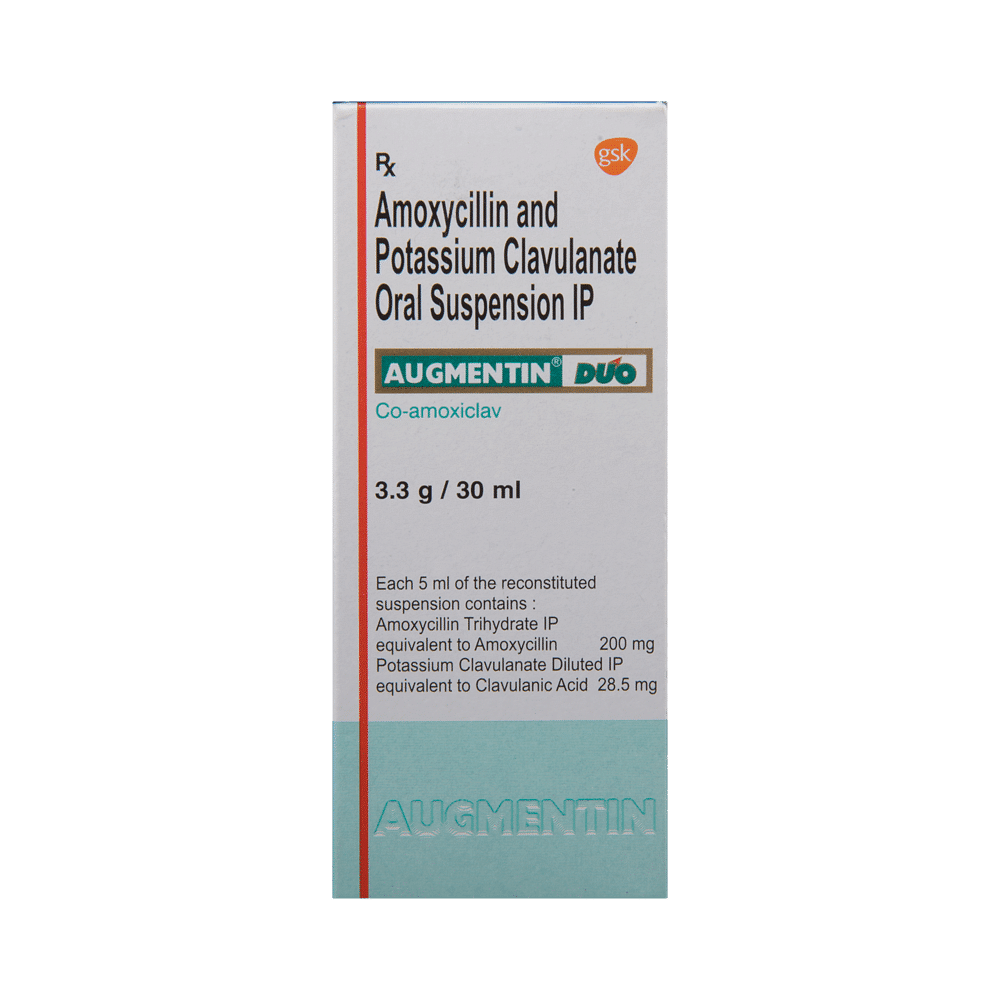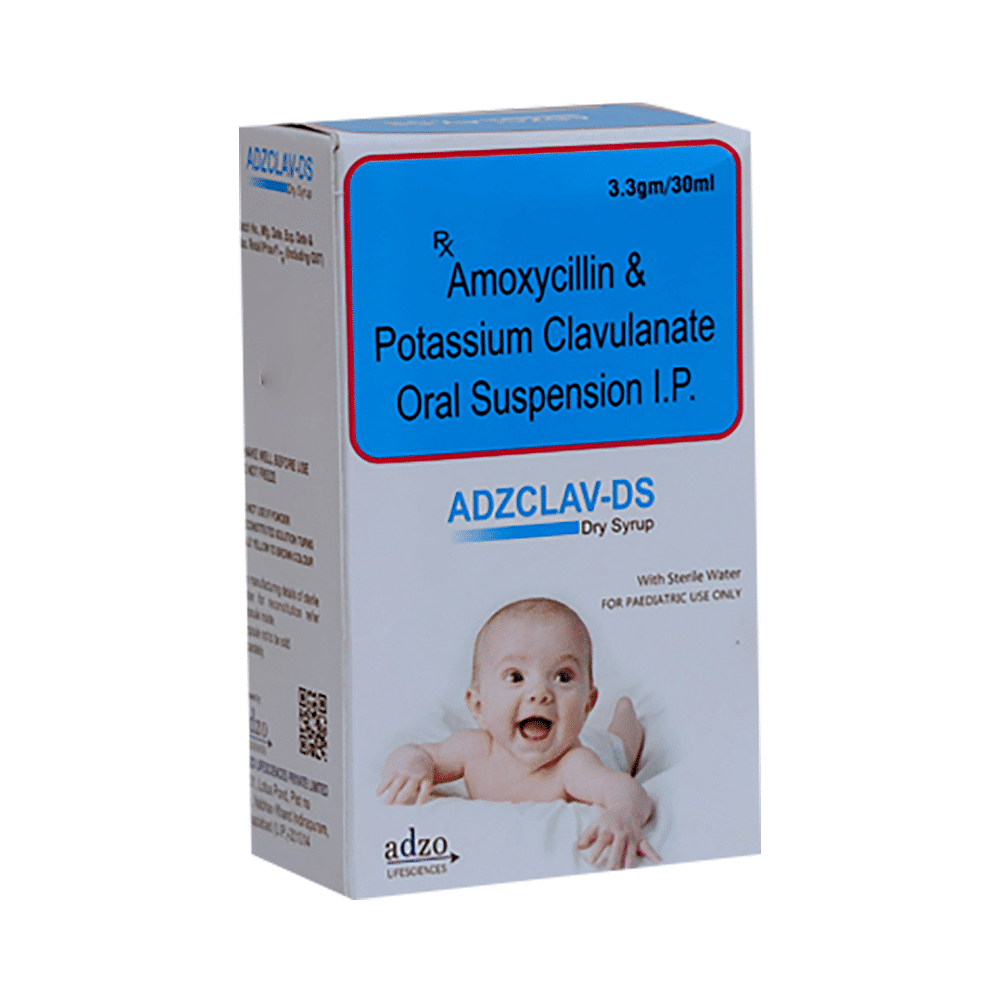
Curiclox-CV Dry Syrup
Manufacturer
Curelab Healthcare
Salt Composition
Amoxycillin (200mg) + Clavulanic Acid (28.5mg)
Key Information
Short Description
Curiclox-CV Dry Syrup is an antibiotic medicine that helps treat bacterial infections of the ear, nose, throat, chest, lungs, teeth, skin, and urinary tract.
Dosage Form
Oral Suspension
Introduction
Curiclox-CV Dry Syrup is an antibiotic medicine that helps treat bacterial infections of the ear, nose, throat, chest, lungs, teeth, skin, and urinary tract. It is capable of killing bacteria that have become resistant to other therapies and thus also helps treat tuberculosis that is resistant to other treatments.
Directions for Use
Your child must complete the entire course of antibiotics. Stopping too soon may cause the bacteria to multiply again or cause another infection.
How it works
Curiclox-CV Dry Syrup is an antibiotic. It has two active agents amoxycillin and clavulanic acid. Amoxycillin works by preventing the formation of the bacterial protective covering (cell wall) essential for the survival of the bacteria. Whereas clavulanic acid serves a special purpose of inhibiting an enzyme (beta-lactamase) that is produced by resistant bacteria. This makes the combination of amoxycillin and clavulanic acid an effective line of treatment for many types of infections.
Quick Tips
Your child must complete the entire course of antibiotics. Stopping too soon may cause the bacteria to multiply again or cause another infection. Your child may have a bitter taste in the mouth after the intake of Curiclox-CV Dry Syrup. Eating citrus fruit or sipping plenty of water or fruit juice may help. Encourage your child to drink plenty of water in case diarrhea develops as a side effect. Never give Curiclox-CV Dry Syrup until and unless prescribed by the doctor. Do not give Curiclox-CV Dry Syrup to treat common cold and flu-like symptoms caused by viruses. Never save medicine for future illnesses. Check ‘expiry’ before giving Curiclox-CV Dry Syrup to your child. Immediately discard all the expired medicines. Stop Curiclox-CV Dry Syrup immediately if your child develops an itchy rash, facial swelling, or breathing difficulty. Report to the doctor without any delay.
Related Medicines

Augmentin Duo Suspension

ACL-Duo Dry Syrup

Pteron-A Dry Syrup

Clocxy Oral Suspension

Moxcon-CV Dry Syrup

Adzclav-DS Dry Syrup

Bactoclav Dry Syrup

Kanmox-CV Dry Syrup

Zocovic Dry Syrup

Ziclave Oral Suspension
Frequently asked questions
Can other medicines be taken simultaneously with Curiclox-CV Dry Syrup?
Curiclox-CV Dry Syrup may interact with other medications. It's crucial to consult your child's doctor about any other medications they are taking before starting this treatment. Also, discuss potential interactions with your child's healthcare provider.
Can I get my child vaccinated while on treatment with Curiclox-CV Dry Syrup?
Generally, antibiotics do not interfere with vaccines or cause adverse reactions in children who have recently been vaccinated. However, it is essential to refrain from vaccination until the child recovers from the illness. Once your child feels better, the vaccine can be administered.
What lab tests might my child undergo while taking Curiclox-CV Dry Syrup for extended periods?
Regular monitoring of kidney and liver function is often conducted during prolonged therapy with this medication. It helps ensure your child's overall well-being.
Can I administer a higher dose than the recommended amount of Curiclox-CV Dry Syrup to my child?
Giving more than the recommended dose can increase the risk of unwanted side effects. If your child experiences increased symptoms, it is advisable to consult their doctor for re-evaluation.
Can I stop giving Curiclox-CV Dry Syrup when the symptoms are relieved?
No, do not discontinue this medication until the full course of treatment is complete, even if you feel better. The symptoms may improve before the infection is fully cleared. It's crucial to continue the medicine as it could still be beneficial.
Can Curiclox-CV Dry Syrup cause diarrhea in my child?
Yes, Curiclox-CV Dry Syrup can sometimes lead to diarrhea. This is a common side effect of this antibiotic which kills harmful bacteria. Additionally, the medication may affect the beneficial bacteria in your child's stomach, leading to diarrhea. Encourage them to drink plenty of water or other fluids if they experience diarrhea. If the diarrhea persists and you notice signs of dehydration, such as infrequent urination with dark-colored and strong-smelling urine, it is essential to consult their doctor. Avoid giving any medication to your child without consulting a doctor.
Does every common cold result in bacterial infection?
Most cases of common colds do not lead to bacterial infections. In fact, antibiotics are unnecessary for these kinds of illnesses. It is essential to seek medical advice from your child's doctor before giving any antibiotic.
What does yellow or green mucus in my child’s nose indicate?
Yellow or green nasal discharge is a common symptom during a cold and doesn't necessarily indicate the need for antibiotics. In most cases, this color change is temporary. Symptoms typically last for 7-10 days.
Are there any signs that require immediate medical attention?
You must call your child's doctor immediately if they experience severe allergic reactions (breathing problems, skin rashes), gastrointestinal complications (diarrhea), or liver damage (weakness, paleness, vomiting). These are potential serious side effects and need immediate medical attention.


